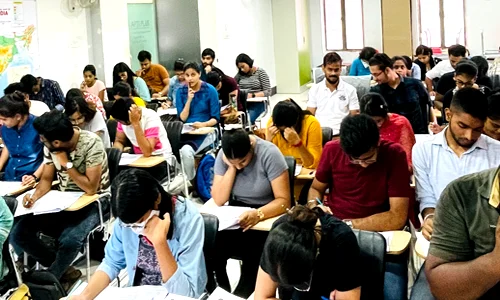



The Credit Guarantee Scheme for Exporters is a government initiative providing collateral-free credit support of up to twenty thousand crore rupees to Indian exporters, including micro, small, and medium enterprises. By offering a 100% government-backed credit guarantee, the scheme enhances liquidity, promotes market diversification, strengthens global competitiveness, and supports employment. It aims to facilitate export-led growth, enable smoother business operations, and contribute to India’s journey towards becoming a self-reliant economy.
Click to View More‘Sweet Revolution ', driven by the National Beekeeping & Honey Mission (NBHM), enhances farmer income and pollination. With 1.4 LMT honey production and 1.07 LMT exports (2023–24), India ranks second globally. NBHM boosts quality, traceability, and FPO support through labs and the Madhukranti portal.
Click to View MoreIndia and the U.S. strengthened their strategic ties with the 10-year “Framework for the U.S.-India Major Defence Partnership” signed in October 2025. The pact enhances cooperation in technology transfer, intelligence sharing, joint exercises, and defence production, reinforcing regional stability and a free, open Indo-Pacific.
Click to View MoreIndia aims for 500 GW renewable capacity by 2030 and net-zero by 2070, relying on critical minerals like lithium and cobalt. To reduce import dependence, it launched the National Critical Minerals Mission, promoting domestic mining, recycling, circular economy, and public-private partnerships for energy self-reliance.
Click to View MoreThe Swadeshi Movement, rooted in India’s fight against colonial economic exploitation, emphasized using indigenous goods and rejecting foreign products. While it played a crucial role in uniting people during the freedom struggle, its post-independence influence led to protectionist economic policies. In modern times, Swadeshi has re-emerged through initiatives like Make in India and Aatmanirbhar Bharat
Click to View MoreIndia inaugurated its first overseas private defence facility in Morocco, with TASL producing the indigenously developed WhAP combat vehicle. This strategic step boosts Aatmanirbhar Bharat, strengthens India–Morocco ties, diversifies defence exports, and counters China’s influence across Africa and Europe.
Click to View MoreThe iDEX-EdCIL partnership, under the ASPIRE program, is a step towards developing dual-use technology in India. It combines iDEX's defense innovation with EdCIL's educational technology expertise, aiming to build indigenous capabilities, address national challenges, and promote self-reliance, aligning with the 'Make in India' vision.
Click to View MoreIndia launch first indigenous 32-bit microprocessor, Vikram 3201, marks a step toward semiconductor self-reliance. This achievement, driven by the India Semiconductor Mission, aims to reduce import dependency by promoting domestic manufacturing, design, and attracting global investment to tap into the future $1 trillion market.
Click to View MoreSemiconductor sector driven by the India Semiconductor Mission, aims to achieve technological sovereignty, strengthening national security, and boost economic growth. India excels in chip design, however, it faces challenges including capital requirements, infrastructure deficits, and geopolitical risks. Government support and international partnerships are vital to become a major global semiconductor player.
Click to View More
© 2025 iasgyan. All right reserved